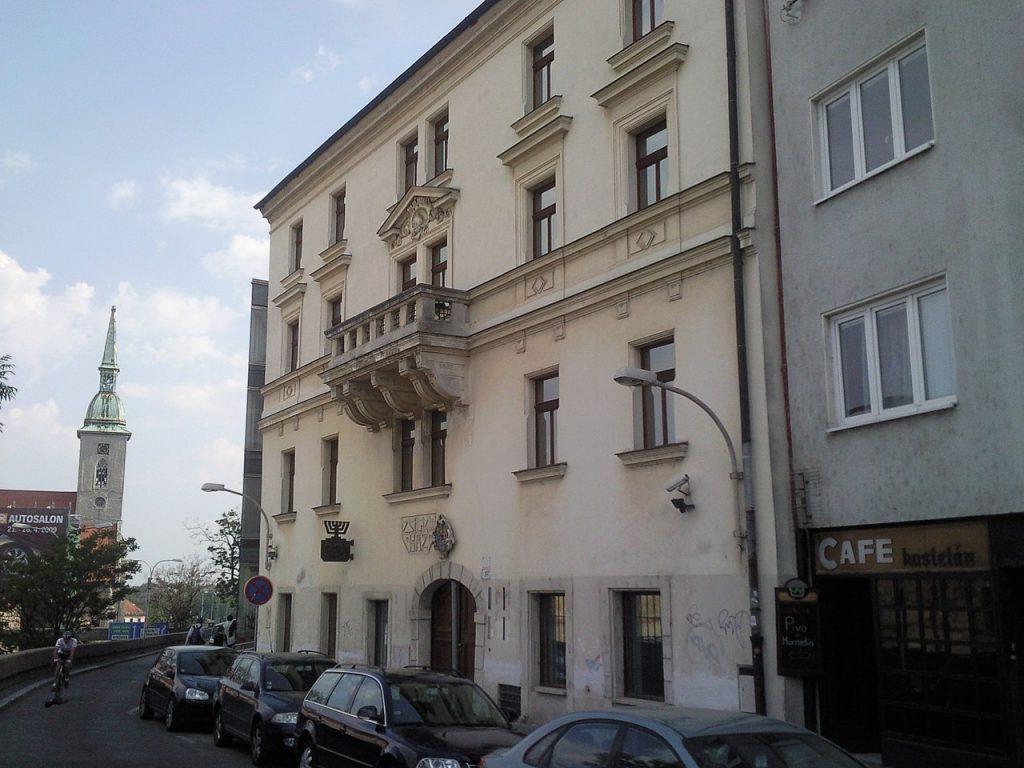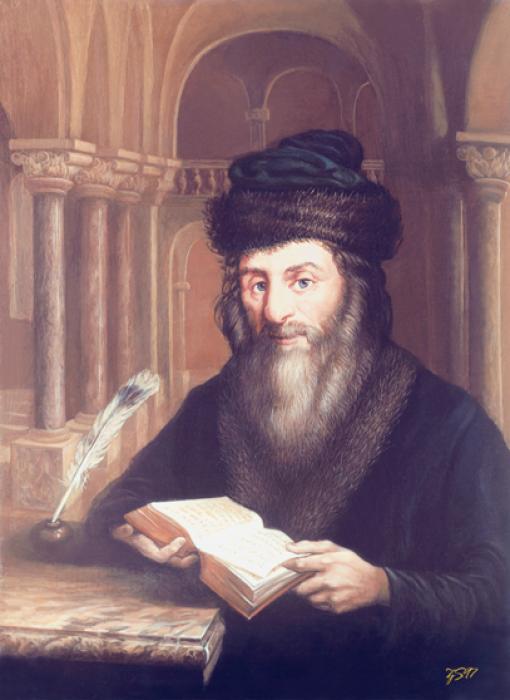
Bratislava, capital of Slovakia and a large city of more than 500,000 inhabitants, is located on the banks of the Danube River, not far from the Hungarian and Austrian borders. Although Jews may have lived here since the Roman period, the first mention of a community dates back to the second half of the thirteenth century.
The Jews of Bratislava have been expelled from the city several times in its history, notably in 1360 and in 1526. At the beginning of the eighteenth century, a census counted 120 Jewish families in the city. During this period, the community began to grow, notably with the influx of Jews coming from Moravia. With the arrival of Rabbi Moses Schreiber, known as the “Hatam Sofer” (1762-1839), the city even became a center of European Judaism. At the very end of the nineteenth century, many Jews arrived in the capital city from the villages of western Slovakia. More than 15,000 Jews lived in the city at the dawn of the Second World War. Many buildings in “Jewish Bratislava” were destroyed during the war and the great urban renewal of the Socialist period.
The Grand Orthodox Synagogue, constructed in an oriental style in 1863 on Zamoska Street, was largely destroyed in 1945. Its remains were razed in 1980.
The large Moorish-style Reform synagogue, so much a part of the landscape near present-day Paulinyho Street, was knocked down in 1970 to make way for a parking lot and highway ramp. Zidovska Street (“Street of the Jews”) wounds its way between the walls of the city and the castle. Several fires (in 1913, for example) destroyed a number of seventeenth and eighteenth-century houses, the last of which were cleared away after 1945. The Jewish Museum is housed in one of the few buildings that survived this period.

Deprived for many years of a spiritual leader, Bratislava’s small Jewish community (at most 1000 members) has, since the fall of Communism, been under the direction of Rabbi Baruch Myers, educated in Brooklyn within the ultra-Orthodox Hasidic Lubavitch (chabad) movement. Information about Slovakian Judaism is available at the Institute of Jewish Studies.
The Jewish Museum constitutes a section of the National Museum of Slovakia. Since 1991, it has been housed in an urban villa dating from the late Renaissance that has been remodeled several times after fires ravaged the street in the seventeenth and nineteenth centuries. The collection of the Jewish Museum in Presov are now contained here. Objects of worship and antique books, some from the Hatam Sofer library, are on display. The galleries of the museum illustrate the life of Slovakian Jews during the last five centuries and celebrate important figures of the community. The permanent exhibition ends with a commemoration of the victims of the Shoah.

Only one synagogue remains in Bratislava. An austere but elegant building in an oriental style, it was constructed for the city’s Orthodox Jews in 1923 following the plans of architect Arthur Szalatnai-Slatinski. It is open for Shabbat services as well as Monday and Thursday mornings.
Perhaps the most moving and symbolic monument in Bratislava is the mausoleum of the Hatam Sofer in the so-called Vajanskeho Nabrezy. The tomb stands in a large underground crypt beneath a highway. It remains one of the important pilgrimage sites for Orthodox Jews in Central Europe. Rabbi Moshe Schreiber, called Hatam Sofer for his great wisdom and penetrating interpretations of the Law, was one of the primary leaders of early modern Orthodox Judaism. The twenty-three tombs and forty-one gravestones are the last vestiges of a Jewish cemetery that was in use until the middle of the nineteenth century. It was razed during the war.
Not far from the mausoleum, some 600 feet up the hill (the entrance is on Zizkova Street), is an Orthodox cemetery established in 1846 and still in use today. Many of the 7,000 tombstones here are from older cemeteries elsewhere.